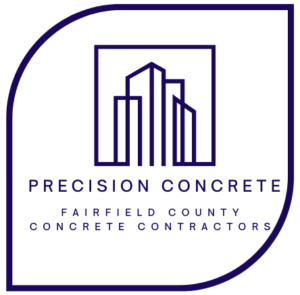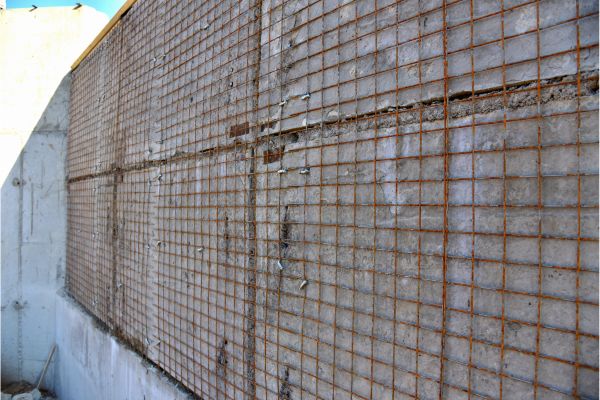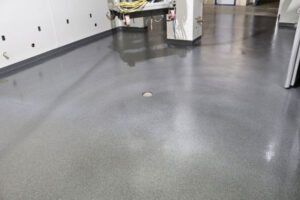
In the world of construction, concrete is a foundational element, but its strength and durability can always be improved. Our years in the building industry have taught us that one key to stronger concrete lies in the use of fiber mesh for concrete, a topic surrounded by misconceptions and often overlooked benefits.
With experience spanning over years, we’ve witnessed firsthand how integrating fiber mesh into concrete mixes not only enhances its performance but also addresses common challenges faced during construction projects.
Fiber mesh for concrete has revolutionized how we approach reinforcing materials, offering an alternative or complement to traditional wire mesh. The inclusion of this technological advancement brings to light an important fact: concrete integrated with fiber mesh reduces cracking from shrinkage as it dries, ensuring a longer lifespan for your structures.
This article will unveil how fiber mesh works its magic within concrete and why sometimes opting for wire mesh might still make sense. Stay intrigued; this could change how you view concrete reinforcement.
What is Fiber Mesh?
Fiber mesh is a type of reinforcement product used to strengthen concrete. It consists of tiny strands or fibers made from materials like glass, steel, synthetic polymers, or natural substances.
These fibers get mixed directly into the concrete batch before pouring. Their primary role is to prevent cracking and improve the durability of the concrete as it sets and ages.

There are two main types: microfiber and macrofiber. Microfibers are designed to control plastic shrinkage cracking that happens in the early stages of curing while macrofibers tackle structural reinforcement, offering higher tensile strength.
Both types play crucial roles in ensuring your concrete structures last longer without significant maintenance requirements. Deciding when to use wire mesh in concrete versus opting for fiber mesh entails understanding these differences and their implications on your project’s needs.
Microfiber vs Macrofiber
Microfibers and macrofibers serve different roles in reinforcing concrete. Microfibers, very thin fibers, mainly work to prevent tiny cracks from growing in concrete as it dries. They distribute throughout the mix easily, offering uniform strength and helping the concrete resist early-age shrinkage cracking.
On the other hand, macrofibers are thicker and longer. They provide structural reinforcement, boosting the concrete’s toughness and its ability to withstand heavy loads or impacts.
Experts choose between microfiber and macrofiber based on what they need the concrete to do. For sidewalk repairs or residential floors where smaller cracks might appear, microfibers make a good choice.
For larger projects like industrial flooring that must bear more weight or endure more stress, macrofibers offer better support. Knowing how each type of fiber contributes will guide you when planning your next project involving fiber mesh concrete.
Purpose in concrete
Moving from the differences between microfiber and macrofiber, we dive directly into their purpose in concrete. Fiber mesh strengthens concrete by reducing the chances of cracking during the drying process.
It acts like a net, holding everything together more tightly than it would on its own. This reinforcement is crucial because it enhances the durability and longevity of concrete surfaces.
By incorporating fiber mesh into your concrete mix, you’re essentially providing an internal support system. This added toughness allows for thinner slabs and complex shapes that might otherwise be impossible without compromising on strength or structural integrity.
So, using fiber mesh can make your construction projects more versatile while ensuring they last longer against wear and tear.
What is Wire Mesh?
Wire mesh is a type of reinforcement used in concrete to provide tensile strength and prevent cracking. It consists of interlaced wires forming a grid pattern, which helps distribute the load across wider areas and limits crack propagation.
The wire mesh is commonly made from steel or other alloys, offering durability and corrosion resistance when embedded within the concrete. This reinforcement method enhances the overall structural integrity of the concrete, making it suitable for various applications such as Concrete slab and Retaining Walls.
Usage in concrete
Fiber mesh is commonly used in concrete to enhance its strength and durability. The fibers are added to the concrete mix, where they act as reinforcement by dispersing throughout the structure of the material.
This creates a three-dimensional support system, which helps control cracking and increase resistance to impact and abrasion. Fiber mesh also assists in reducing plastic shrinkage cracking, making it an effective choice for various concrete applications.
Incorporating fiber mesh into your concrete mix offers benefits such as improved toughness, increased impact resistance, reduced permeability, and enhanced ductility. Additionally, it provides better crack control compared to traditional wire mesh reinforcement without the need for additional labor-intensive installation processes.
Advantages and disadvantages
The usage of fiber mesh in concrete has several advantages. It enhances crack resistance, impact strength, and durability. Fiber mesh also reduces the need for steel reinforcing, which lowers costs and simplifies installation.
However, fiber mesh may not provide as much structural support as wire mesh in heavy-duty applications. Its additional cost compared to traditional wire mesh can also be a disadvantage for some projects.
Comparing Fiber Mesh and Wire Mesh
Fiber mesh surpasses wire mesh in strength and is cost-effective. Installation of fiber mesh is easier compared to wire mesh.
Strength
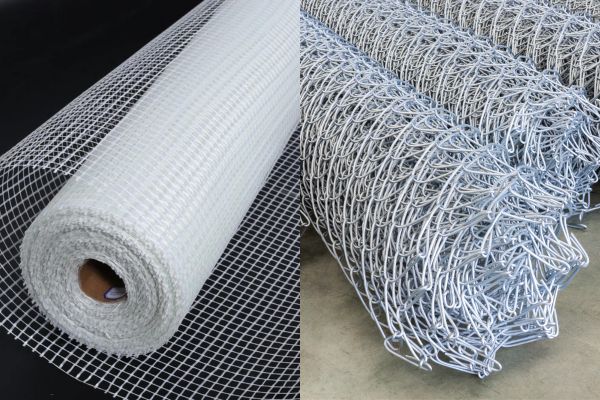
Fiber mesh significantly improves the strength of concrete, enhancing its ability to withstand tension forces. The incorporation of fiber mesh in concrete leads to increased impact resistance and reduced cracking, contributing to a more durable and long-lasting structure compared to wire mesh reinforcement.
This added strength makes fiber mesh an ideal choice for various construction applications where robustness is essential.
The use of fiber mesh enhances the flexural strength and toughness of concrete, making it more resilient under dynamic loading conditions. The fibers create a three-dimensional network within the concrete matrix, effectively distributing loads and reinforcing the material throughout.
Cost
When considering the cost of fiber mesh versus wire mesh for concrete reinforcement, it’s important to note that fiber mesh is often more expensive per unit than wire mesh. However, this might be offset by the ease of installation and reduced labor costs associated with using fiber mesh.
Additionally, the long-term benefits and durability provided by fiber mesh could result in cost savings over time.
In summary, while initial investment costs may be higher for fiber mesh, its advantages in terms of strength and application ease can make it a cost-effective option for concrete reinforcement.
Ease of installation
Fiber mesh offers an easy installation process, making it a popular choice for reinforcing concrete. Unlike wire mesh, fiber mesh doesn’t require any special equipment or complex procedures.
Simply add the recommended dosage of fiber mesh to the concrete mix during preparation and pour it as usual. This straightforward application saves time and labor costs, making fiber mesh a convenient option for strengthening concrete structures.
In addition to its strength and cost advantages over wire mesh, the ease of installation makes fiber mesh a practical solution for enhancing concrete performance without adding unnecessary complexity to construction projects.
Tips for Using Fiber Mesh in Concrete
To achieve the best results, follow the recommended dosage and apply fiber mesh meticulously during the concrete mixing process. Proper storage is essential to maintain its effectiveness over time.
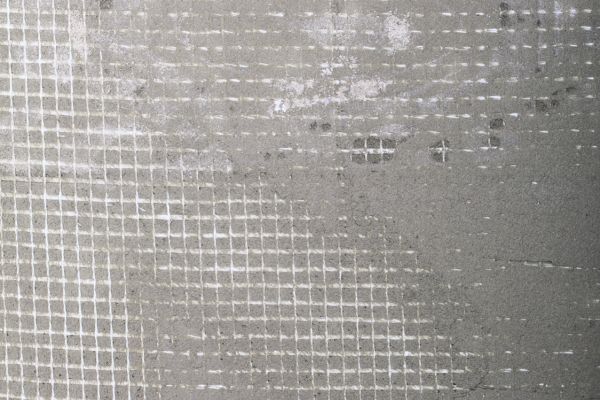
Recommended dosage
To ensure the effective reinforcement of concrete, the recommended dosage of fiber mesh typically ranges from 1.0 to 2.5 pounds per cubic yard. This optimal amount may vary based on factors such as specific project requirements and the type of fibers being used.
When adding the fiber mesh to concrete, it is important to carefully follow manufacturer guidelines regarding dosage and distribution throughout the mixture, ensuring uniform dispersion for maximum effectiveness.
Application process
Firstly, mix the concrete thoroughly with water and other additives according to your project requirements.
Then, slowly add the specified amount of fiber mesh into the mix while continuously blending until a uniform distribution is achieved. Finally, pour or pump the reinforced concrete into the designated area and ensure proper consolidation for optimal performance.
Ensuring that you adhere to these steps will result in an effective application of fiber mesh in strengthening your concrete structure.
Storage and shelf life
Once opened, store fiber mesh in a dry area to prevent moisture absorption. Keep it away from direct sunlight and extreme temperatures to maintain its integrity. Check for the expiration date before use, as expired fiber mesh may compromise the concrete’s strength.
For long-term storage, seal the original packaging tightly and place it on a pallet or shelf above ground level. Avoid stacking heavy items on top of the fiber mesh to prevent deformation or damage. Lastly, regularly inspect stored fiber mesh for any signs of deterioration.
Final Thoughts
Fiber mesh serves as a reliable solution to mitigate cracking, enhance ductility, and improve impact resistance in concrete. Whether in the form of synthetic fibers like polypropylene or natural fibers such as steel, glass, or basalt, each type contributes distinct advantages to the concrete matrix.
Furthermore, the application of fiber mesh provides engineers and architects with greater design flexibility, allowing for the creation of thinner and lighter structures without compromising on strength or longevity. This not only reduces construction costs but also promotes sustainable building practices by minimizing material usage.
Moreover, the utilization of fiber mesh in concrete construction extends the service life of infrastructures, reducing maintenance requirements and enhancing resilience against environmental factors such as freeze-thaw cycles, seismic activity, and corrosion.
